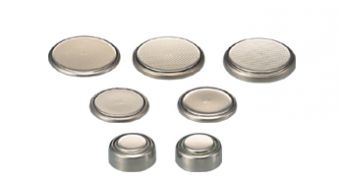From watches to smartphones, batteries have become ubiquitous in today's consumer electronics, so DARPA, together with a team of scientists at the UCLA University in California, is trying to develop the world's smallest Lithium-ion devices, the largest of which would be no bigger than a grain of sand.
Although the research is still in its earliest stages this could as well lead us towards even more portable devices that wouldn't depend on bulky batteries such as the ones found in present day laptops while also featuring impressive autonomy since a battery the size of the one found in today's smartphones could power a notebook or other power hungry devices.
"We're trying to achieve the same power densities, the same energy densities as traditional lithium ion batteries, but we need to make the footprint much smaller," said Jane Chang, a University of California engineer that is working on developing these batteries.
In order to build such batteries scientists are forced to think in three dimensions, fabricating well-ordered micro-pillars or nano-wires that should maximize the surface-to-volume ratio leading to an increased energy density.
This is achieved by coating these micro-pillars using atomic layer deposition, a slow but precise process that allows layers of material only an atom thick to be sprayed on a surface, and, although the researchers have still a lot of work left in front of them, the engineers have managed to apply solid electrolyte lithium aluminosilicate to these nanomaterials as well as build other components of these 3D microbatteries, such as the electrodes.
All these components still have to be assembled and integrated to make a functioning battery, so there is still some time to wait until a working prototype can be presented, but this is good news indeed since we have come to depend on batteries for many of our everyday tasks, advancements is this field being much to scarce.

 14 DAY TRIAL //
14 DAY TRIAL //